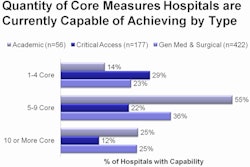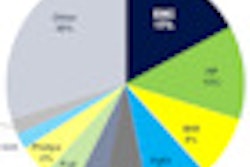The system makes its international debut in this poster presentation, which will include a discussion of its structure and applications. It has been acquiring radiation dose data from patients at Samsung Medical Center since June 2010, according to session presenter radiologist Myung Jin Chung, MD, who also is an associate professor of radiology at Sungkyunkwan University in Seoul.
The team that developed the RIIS built a gateway that looks at DICOM information such as structured report or exam headers in the PACS database (Centricity, GE Healthcare, Chalfont St. Giles, U.K.) and extracts dose information. The RIIS also has the capability of calculating several other types of dose measurement, including whole-body effective dose, using several conversion factors.
Whole-body effective dose is stored in the HIS, where it is displayed as cumulative patient dose over the course of a year. Data can be organized by query category, such as a specific type of exam. By having access to a patient's cumulative radiation dose exposure, clinicians can make more intelligent decisions about ordering diagnostic imaging exams.



















